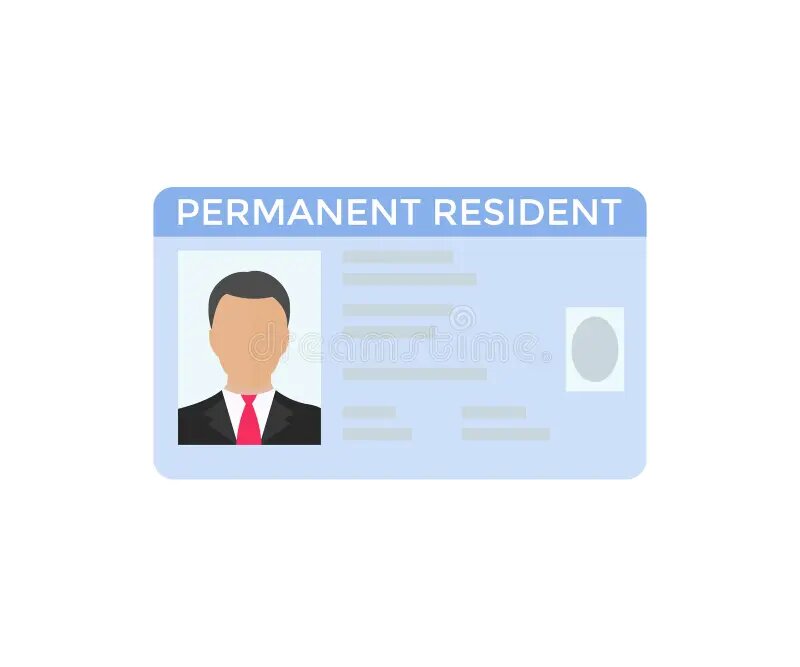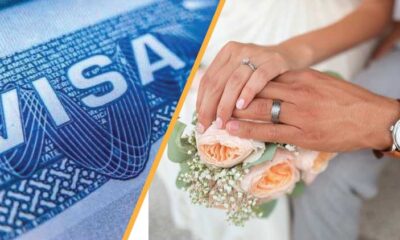Visa
Ways To Convert Your F1 Visa To Green Card In The USA

Most international students in the US have F1 visas. The visa is only valid while in school, and after that, students cannot stay in the US. The student must indicate they will return and not stay in the US during application. They must show they will return home after graduating.
Even though the F1 visa is nonimmigrant, you can stay in the US after graduating. The US wants educated citizens. Most F1 visa holders are studying in the US, therefore they have residency loopholes.
During the F1 visa interview, US Embassy staff emphasize returning home. They often inquire if the student will return home. They seek confirmation that you won’t stay illegally or otherwise. Bank statements, leases, or property deeds are needed to substantiate your return.
You can get a Green Card from a student visa, notwithstanding what you have to prove in your visa interview. You should consider US Green Card health insurance if you’re switching.
How to Get a Green Card in USA for Students?
While the US does not explicitly prohibit international students from trying to get a Green Card, they made the process quite difficult. Here are the ways to get a Green Card as an international student:
- Self-petition as a Person with Extraordinary Abilities.
- Adjust status to a dual intent visa.
- Become an investor in the United States.
- Marry a US citizen.
Self-petition as a Person with Extraordinary Abilities
Many F1 visa students are well educated because they are pursuing higher education. They have skills that the average individual or Green Card application may not have. The United States has created a special visa for these accomplished individuals. This is the Green Card for Persons with Extraordinary Ability, also known as the EB-1 visa.
The EB-1 visa is for these groups of people:
- outstanding professors and researchers,
- people with extraordinary abilities in arts, science, business, athletics, or education, and
- executive managers who have worked at a foreign branch of a US company for the past 3 years
- With an EB-1 visa, a person can then work in the US in their field of specialty permanently. Getting the EB-1 visa though is quite
- difficult since the requirements are extensive. Very few people can meet them and that is why going from an F1 visa to an EB-1 visa is also difficult.
Some of the requirements of the EB-1 visa include proving you have achieved any of the following:
- Having won an Oscar, Pulitzer, or an Olympic Medal prize
- Evidence that you have received a national or international price/award for your achievements and excellence
- Evidence that you are a member of an association for your field which continuously asks for advancements from their members
- Evidence that you have published papers or research in your field which has been recognized in journals or the media
- Evidence that you had to evaluate the work of other people either as an individual or in a panel, etc.
There are many other requirements which you can find in the EB-1 visa article.
To apply for the EB-1 visa, the F1 international student has two choices:
- find a job in their field of specialty
- self-petition
If you find a job, then the employer must sponsor you by paying for the petition. Also they must make sure they follow labor and visa laws.
If you self-petition, you must go through the whole procedure yourself. This includes doing the application and paying the high fees. Even after you do this, there is no guarantee you will get an approval.
Adjust status to a dual intent visa
Because few people can receive a Green Card through the EB-1 visa, there are other ways. An indirect option is to convert an F1 visa to a dual purpose visa.
A dual intent visa is a nonimmigrant work visa that facilitates Green Card applications. After some time, the adjustment can occur. H-1B and other dual purpose visas are nonimmigrant visas.
F1 students can work in the US for 12 months after graduating. They can use two programs.
The Curriculum Practical Training (CPT)
The F1 student may be able to find work through their educational institution. They can gain practical experience by working as a Teaching or Research Assistant. Students can begin their CPT after 9 months of enrollment in an educational institution. The CPT might last up to a year. This may persuade the institution to sponsor the student. If the student meets the criteria, he or she can continue as an Associate Professor.
The Optional Practical Training (OPT)
The OPT program lets international students work in the US. It begins once the student graduates. The student works for 12 months for a US firm in their field. The student must return home after 12 months.
If you succeed in OPT, you can receive a dual purpose visa. The company can sponsor your H-1B visa. The employer must petition USCIS and gain approval. F1 students cannot self-petition for nonimmigrant visas. Employers can initiate the procedure only.
After acquiring the dual intent visa, international students can apply for Green Cards. This indirect approach takes longer, but most overseas students pick it because it’s easier than receiving an EB-1 visa.
Become an investor in the US
Another way to obtain a Green Card is to invest in the US economy. This is only applicable if you have the financial means to do so. The EB-5 visa is available if you invest $500K to $1M in a US commercial firm and create more than 10 permanent jobs.
The EB-5 visa provides rich investors with a Green Card. To obtain it, you must meet certain conditions, and there are four categories of EB-5 visas:
- C-5 visa for investors who create jobs outside of target areas
- T-5 visa for investors who create jobs in targeted rural or high unemployment areas
- R-5 visa for investors who take part in an Investor Pilot Program not in a target area
- I-5 visa for investors who take part in an Investor Pilot Program in a targeted area
While the EB-1 visa is difficult to get because of its extensive requirements, the EB-5 is difficult because of the financial prerequisites. But if you can afford it, it is one of the better ways to go from an F1 visa to a Green Card.
Marry a US citizen
Finally, international students can earn a Green Card by marrying a US citizen. This path to a Green Card converts you to an IR-1 or spouse visa. The spouse visa is for foreign spouses of US citizens alone.
Do not believe this is a simple way to get a Green Card. USCIS conducts comprehensive background checks to verify the relationship. They want the connection to go beyond the Green Card.
Thus, USCIS grants a foreign spouse conditional status when they marry a US citizen. They receive a 2-year CR-1 visa. If the couple divorces within two years, the foreign spouse loses status. The foreign spouse must return home.
If married for two years, the foreign spouse can change status. Conditional status can be permanent and Green Card obtained. If you’re an international student in a real relationship with a US citizen, you can receive a Green Card this way. You must receive a medical exam to apply for a green card.






















